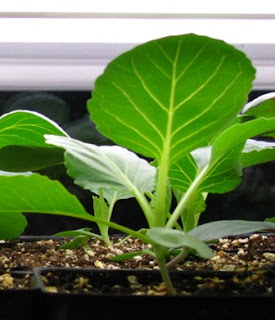If you have a spare room, garage, or other heated space, you can produce a lot of food this winter by gardening under lights. We have grown lettuce and other green crops for many years now, using only some cheap fluorescent shop lights from the big-box store. Recently, we experimented with LED lighting, and this winter we are growing under metal halide (MH) in the garage. Each of these lighting systems has its advantages and disadvantages, and we have had some success with all of them. Nevertheless, my conclusion is that MH lighting is far preferable, so long as you have a dedicated space for the light garden.
A dedicated space is important because MH lighting generates a lot of heat, and is not suitable for use around children or boisterous pets. If you enclose the lamp, you have to have forced air ventilation to avoid overheating and a possible fire hazard. Open fixtures are the easiest to use, but obviously are also the most hazardous. It costs about 30 cents per day to operate the unit we are using.
Fluorescent lighting has been great for finishing lettuce, allowing us to start more seeds under the MH system. The MH unit effectively illuminates about 25 square feet of growing space, which, by the way, is more than the standard recommendation for a "square foot garden." Two four-foot shop lights will illuminate about 8 square feet, but the lights must be close to the plants to be effective. That limits the crops to smaller varieties, such as lettuce or arugula. Taller plants, such as tomatoes or peppers, simply cannot be illuminated effectively using only fluorescent lighting.
LED units have numerous advantages. They are bright, safe, and cheap to operate. But they come with a high initial price tag, which is why they are not yet widely popular for home use. Professional growers, however, are relying on them more and more.
Boy howdy, does the metal halide unit grow the veggies! We have been harvesting lettuce and will soon have peas, arugula, scallions, beans and corn salad. We have the first tiny green tomatoes, and expect ripe ones in time for Christmas dinner. All the plants are growing in standard nursery containers using Bonnie Growing Mix. We fertilize weekly with Miracle Gro, diluted according to the label directions. We water every other day, although daily watering may be necessary when the humidity dips this winter.
Indoor light gardening equipment is widely available. There is a local retail store, and of course many online vendors. For gardeners with a suitable indoor space, you can continue to enjoy fresh, wholesome home grown food all winter, by growing under lights. We are experimenting with different vegetable varieties, fertilizers and techniques and will continue to report on our findings throughout the winter months.

No comments:
Post a Comment